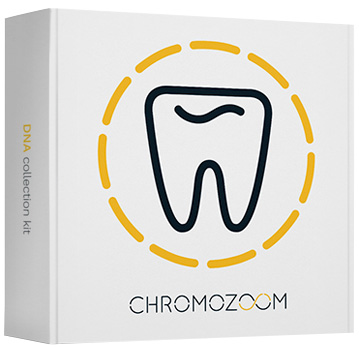Periodontosis
What is periodontosis?Periodontosis is an inflammatory disease of the teeth, which dissolves and reduces the bone around the teeth as a result of the inflammation. This process may eventually lead to the tooth being released from the tissue and falling out. The occurrence of this disease is influenced by several factors, mostly by the person’s genetic predisposition and lifestyle.
Periodontosis is a disease affecting all components of the periodontium (tissue fixing the tooth in the socket). The occurrence of periodontal pockets (gum inflammation spreading towards the neck and root of the tooth, which widens the gap between the gum and the tooth) is typical for this disease. This leads to destruction of the epithelial attachment and gradually to resorption (changes in the bone). Up to 80% of the population older than 30 years old is affected by inflammation of the gums.
This second most frequent disease of the mouth threatens not only the teeth but also the internal organs. Unfortunately, untreated periodontosis is also a very frequent cause of tooth loss. This disease is particularly insidious as it does not cause any pain during the initial stage! Periodontosis manifests itself by a slight swelling and reddening, which is often accompanied by bleeding, especially while cleaning teeth. Bad breath caused by hydrogen sulphide produced by the bacteria is also a common symptom. As the inflammation develops, it causes pain, the sensation of pressure and tingling. Pockets, that may be filled with puss, form between the tooth and the gum. The tooth necks are exposed, gaps between the teeth occur, and the teeth are no longer securely anchored.
Toothbrush
Toothbrushes probably came from ancient China. The bristles for toothbrushes originally came from the fur of the wild boar. French physicians were the first in Europe to start promoting toothbrushes as late as in the 17th century. Modern toothbrushes made with nylon bristles appeared at the beginning of the 1940s. Cleaning teeth was not a popular activity. Soldiers returning from World War II contributed to more widespread tooth brushing in America.
Dentures
Dentures date back to the year 700 BC, the time of the ancient Etruscan civilisation. They even attached dentures made of ivory and bones with gold bridges.
Development of periodontosis
The disease usually occurs at a young age - between the 30th and the 40th years of age, and in some cases even earlier. The development and course of inflammation of the periodontium (periodontal ligaments fixing the tooth root to the bone of the socket) depends in particular on three factors:
1. The quantity and activity of the pathogenic bacteria,
2. Local and systemic immune responses to the present bacteria,
3. Factors affecting healing: smoking, diabetes, etc.
The responsiveness to microbial infection is influenced by the individual’s genetic profile. Interleukin-1 (IL-1) influences the body’s immune response to infection and contributes to changes in the bones and teeth. Research has confirmed that mutations of IL-1 gene groups, which lead to increased production of these proteins, occur in severe and aggressive forms of periodontosis. This genetic profile is associated with a high risk of the periodontal disease, in particular when combined with smoking.
Healthy tooth and gum and Paradentosis
In the U.S., a total of 64.7 million people suffer from periodontosis, of which 56.7% are men and 38.4% are women.
Interleukin 1 (IL-1 or IL 1) is a protein from the group of cytokines and belongs to the interleukin-1 family. It is present in the body in two forms, IL-1-alpha and IL-1-beta, with not entirely identical biological functions. IL-1 is one of the key molecules of the immune system and a major part of the so-called cytokine network, which ensures the regulation and coordination of various parts of the body’s defence against infection, inflammation, injury and stress. However, its functioning is not limited to the immune system. Interleukin-1 also influences normal growth and the morphogenesis (change in development) of many cell types and overall metabolism. Therefore, it is a protein with a broad range of functions in the body. IL-1 has lately been studied often in connection with the development of many autoimmune diseases, such as rheumatoid arthritis, osteoporosis, psoriasis, systemic sclerosis, diabetes mellitus, Alzheimer‘s disease or autoimmune encephalomyelitis, and it is probably involved also in the development of a number of cardiovascular diseases.
Periodontosis affects not only teeth. This condition is also associated with diseases of coronary arteries, diabetes, stroke and other health problems.
